Knik
16,00 €
Minimalist and durable
Knik is a lace yarn, the finest Lopi yarn available. This single strand of 100% Icelandic virgin wool, loosely twisted, gives it an almost "unspun" or roving appearance. This characteristic is essential for understanding its behavior.
Ideal for making delicate and airy stoles and shawls reminiscent of the yarns used by women of yesteryear to create the famous Icelandic lace knitting. Pleasant to knit and crochet, sometimes used for weaving and crafts, it is perfect for making lightweight garments such as fine sweaters or cardigans for spring or cool summer evenings, baby clothes, and other accessories.
Needle sizes can vary considerably depending on the desired effect. For lace or very airy fabrics with a beautiful drape, needles from 2 mm to 3.5 mm are often used. For denser knits or projects requiring more body, needles up to 6 mm can be considered, especially if you want to combine several strands. In double strands, you achieve a thickness close to Piteraq, in which case the needles used are larger, around 3.5 to 4.5 mm. This allows you to create a unique lopapeysa, potentially lighter and with beautiful stitch definition for the jacquard collar. Knik can also be combined with other yarns to create textural effects or add structure to a project.
Its initial texture may appear somewhat rustic, dry, or even slightly rough or "hairy." Garments made with Knik are stretchy and therefore difficult to measure until they have been washed. It is strongly recommended to knit a swatch, wash it, and block it, as the gauge (knitting tension) and appearance of the fabric change significantly after washing. The fibers relax, open, swell, and intertwine, creating a light and airy fabric with a slightly softer feel. This phenomenon, called "bloom," is very characteristic of Icelandic yarns and radically transforms the finish, enhancing the stitch definition. This essential step will allow you to check your measurements and appreciate the final result before starting a project.
Knik is a very versatile yarn that can be used in many ways to suit different types of projects and weights. For those seeking warmth without the weight, lightness and natural beauty of fibers, with the satisfaction of watching the fabric transform and soften throughout the process.
Features
Natural fiber color or hand dyed
Composition: 100% Icelandic wool
Weight: approximately 100 g
Length: approximately 500 m
Sample 10 cm x 10 cm: 42 stitches x 45 rows (n°2)
Recommended needle size: 2 to 6 depending on the project
Women's size 38 sweater: 2 to 4 skeins ± depending on project
Typology: Lace – Light fingering
1-ply carded yarn, spun in Iceland
No primer or softener. Untreated Super Wash
Packaged in skein or ball (optional)
Icelandic wool has the particularity of not requiring frequent washing (for which certain precautions are necessary, see the “Lopi Care” tab), simple airing is often sufficient.
Uses
Mid-season yarn, summer yarn, knitting, crochet, weaving, lace, jacquard, Lopapeysa, ethical, sustainable, untreated.
What is Lopi wool?
Lopi wool (pronounced "lopay") is a unique type of wool from Icelandic sheep. It is particularly famous for being the traditional material used to knit the Lopapeysa, the famous Icelandic sweater with a distinctive circular pattern around the collar and shoulders.
What makes Lopi wool so special is its unique composition. The fleece of the Icelandic sheep is composed of two distinct types of fibers:
– The "tog" (or outer fibers): These are long, strong, and water-repellent fibers. They provide excellent protection against the elements.
– The "þel" (or inner fibers): These are shorter, softer, and insulating fibers that act like down.
The unique feature of Lopi wool is that these two types of fibers are blended and carded together (often as an unspun or lightly spun roving) rather than being separated. This combination gives Lopi wool exceptional properties. It is incredibly warm while being light and breathable, thanks to the airy structure created by the blend of fibers. The water-repellent outer fibers give it a certain water resistance, making it ideal for outerwear. It's a robust wool that can last for generations. Although Lopi wool may have a rustic appearance and initially feel a little rough for some people, it tends to soften with washing and use.
The presence of plant matter, such as hay or grass, in lopi wool is completely normal. This is a sign that this Icelandic wool is natural and minimally processed, in order to preserve its unique qualities. These small pieces are usually easy to remove by hand while working the yarn and are not considered a defect, but rather a testament to the authentic and rustic character of this atypical wool.</sp
Our Lopi family consists of three thicknesses:
– Barber: This is the traditional Lopi wool, the thickest of the spun wools (bulky/chunky type), ideal for very warm and insulating outerwear such as coats, thick sweaters, or throws. It is very robust and offers excellent protection against the cold.
– Piteraq: This is one of the most popular and versatile Lopi wools. It is lightly spun, which makes it more durable. Of medium weight (worsted/aran type), it is suitable for both indoor and outdoor clothing. This is often the go-to yarn for a first Lopapeysa.
– Knik: This is the finest of the Lopi yarns spun. It's a very lightweight single-ply yarn (lace/light fingering type). Ideal for delicate projects, shawls, lace, or to be combined with other yarns to add lightness or a touch of color without too much bulk.
In summary, Lopi wool is a unique wool, emblematic of Iceland, appreciated for its thermal qualities, its resistance and its versatility, particularly suited to warm and durable sweaters.
Lopapeysa
Knitting the Authentic Lopapeysa
The Lopapeysa is the traditional Icelandic sweater, recognizable by its distinctive circular yoke adorned with colorful patterns. Appearing in its current form in the mid-20th century, the Lopapeysa has become a powerful symbol of Icelandic national identity and self-sufficiency following the country's independence. It represents not only a treasured craftsmanship but also a deep cultural connection, often knitted as a loving gift within Icelandic families. The word "Lopapeysa" is a combination of the words "lopi," meaning the woolen yarn used for the sweater, and "peysa," meaning sweater in Icelandic. This term literally means "woolen sweater," and it can only be called a Lopapeysa if it is made from Icelandic wool.
This garment is unique due to several key elements:
– Material: It is hand-knitted with lopi, an unspun wool from Icelandic sheep.
– Construction: It is usually knitted seamlessly in the round, from the bottom up. The yoke is created using a jacquard technique (multi-color knitting).
– Design: The yoke patterns are often geometric or inspired by Nordic nature, traditionally using the natural colors of wool (white, black, gray, brown).
When you first wear an Icelandic Lopapeysa, you may notice its rustic texture. However, after the first wash, the garment will become noticeably softer and more pleasant to the touch. Additionally, over time, the wool will gradually soften, so it is advisable to give it some time to adapt. For sensitive skin, it is often recommended to wear it over a thin garment.
Maintenance of the Lopi
To properly care for your Lopi wool and preserve its unique qualities, here are the essential points to remember:
Frequent airing: the ideal reflex! Let it air out rather than washing it every time; Icelandic wool is naturally odor-resistant. This is an excellent practice, highly recommended, as it preserves the fibers, maintains the shape and suppleness of the piece, and reduces the risk of felting. To air your Lopi effectively, choose a well-ventilated location but not one directly exposed to intense sunlight or pouring rain. Avoid direct heat sources, and do not place it near a radiator or fireplace to air it, as excessive heat could damage it. Fresh, dry air works wonders for refreshing wool. A night outside (if it is not raining and there is not too much humidity) can be very effective.
Forget the washing machines! Whether it's for washing, spinning, drying, or ironing, pamper your handmade work with great delicacy!
Wash only when necessary (in case of visible stains, after prolonged use, or if odors persist).
Use constant water temperature (20-30°C or cold) for washing and rinsing, as well as a gentle natural detergent (pH neutral), ideally with lanolin. Please note: to preserve natural dyes, the use of soap or detergent with an excessively high pH, vinegar, baking soda, etc. (particularly to soften the fiber) is to be avoided, as this will permanently affect the color.
No agitation or twisting, handle your garment gently, squeeze it gently to clean it, and knead without rubbing or twisting to prevent felting. Rinse several times following the same principle (some wool detergents, such as Eucalan, do not require rinsing!). Gentle spin by hand, squeezing gently without twisting, or roll in a towel to absorb excess water. Flat drying is essential on a clean towel, restoring its shape, in the open air and away from direct sunlight or heat sources. Never hang a wet Lopi garment, as this will distort its shape. Pilling is normal at first and can be easily removed by gently removing the pills.
By prioritizing ventilation and following his advice, you will take care of your Lopi wool creations which will remain beautiful and comfortable for many years.
We recommend using Eucalan detergent available in our shop, haberdashery section.
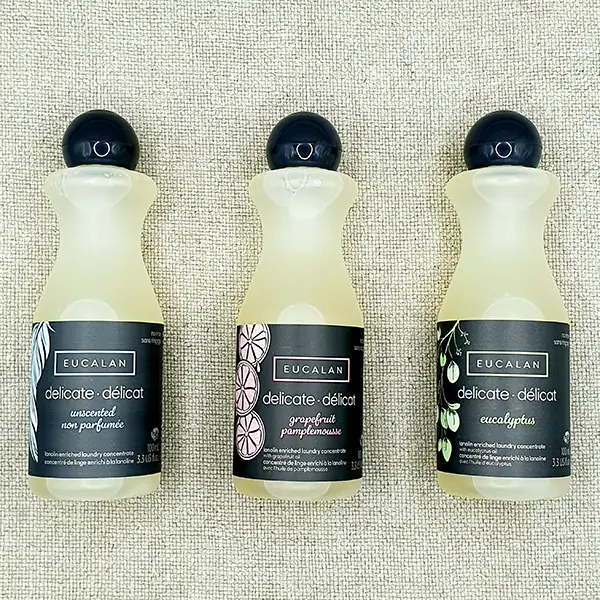
The « bloom »
What is "bloom"?
The term "bloom" is very relevant when talking about Lopi wool.
It refers to the way a yarn's fibers "swell" or "open out" after washing and blocking a knitted piece. The fibers relax, unfurl, and fill the small spaces between the stitches, creating a more uniform, fluffier, and often softer fabric. This can make the yarn appear thicker or the fabric denser than it was on the needle.
Icelandic wool is particularly renowned for its significant bloom after washing. This phenomenon is related to the unique fiber structure: loosely twisted carded wool containing two types of fibers: tog (long, strong outer fibers) and þel (short, soft inner fibers). When the knit is washed, the þel (down) relaxes and expands, filling the spaces and creating this blooming effect.
Warmth and Lightness: Bloom is essential for the insulating properties of lopi sweaters. The expanding fibers trap air, making the garment incredibly warm despite its apparent lightness.
Texture and Softness: Before washing, Lopi can feel a little rustic, even rough for some sensitive skin. The bloom softens the fabric considerably, making it more comfortable to wear. This is why it's crucial to always wash and block your swatch and finished Lopi project to fully appreciate the result.
Knit and Jacquard Uniformity: The bloom helps hide small irregularities in the knits and bind the colors together in the jacquard. Patterns blend better, and the fabric appears more consistent and professional.
Tips for optimizing the Lopi's bloom:
Gentle washing: Hand wash your project in warm water (not hot to avoid unwanted felting), with a mild wool soap (neutral pH). Avoid wringing or rubbing.
Soaking: Let your item soak for at least 20-30 minutes to allow the fibers to relax and absorb the water.
Lay Flat and Block: Gently squeeze out excess water (without wringing) and lay your item flat to dry, ideally blocking it to the desired size. The flat drying process allows the fibers to settle into their new, "opened" position.
Informations
Bath
We dye small quantities of yarn at a time. All skeins sold under the same reference come from the same batch. As this is an artisanal work, there may however be slight variations in shades between these skeins.
Each batch is unique, it is impossible to obtain exactly the same shade from one batch to another. Remember to alternate the skeins in your projects and make sure to order enough yarn for your project.
Don't worry
Despite numerous rinses and careful washing in the workshop, some colors (especially the most intense ones) may still slightly stain your hands when making your work or color the water when you care for it. This is simply excess dye, the final result will not be affected. There may also sometimes be a little plant powder stuck to the fibers that will come off on its own.
Colors, photographs and screens
Particular care is taken in the production of photographs to be as close as possible to real colors. But natural colors have rich and subtle tones that computer screens (computers, tablets, smartphones) cannot reproduce. The perception of colors can therefore vary depending on the screen, sometimes creating a slight discrepancy with the real color of the object.
Related products
-
Elvegast
21,50 € – 34,00 €Price range: 21,50 € through 34,00 €Rated 0 out of 5Aran – Worsted
100% norwegian wool
2 strands
100 g / 200 m approximately
Needles : 4.5 – 5
-
Chocolatero
17,50 € – 30,00 €Price range: 17,50 € through 30,00 €Rated 0 out of 5Bulky – Chunky
100% baby alpaga
2 strands
100 g / 100 m approximately
Needles: 5 – 6
-
Samiel
16,00 € – 28,50 €Price range: 16,00 € through 28,50 €Rated 0 out of 5Fingering – Sock
50% virgin wool – 25% tussah silk – 25% linen
4 strands
100 g / 350 m approximately
Needles: 3
-
Alizés
16,00 € – 28,50 €Price range: 16,00 € through 28,50 €Rated 0 out of 5Fingering – Sock
100% merino
3 strands
100 g / 400 m approximately
Needles : 2.5 – 3
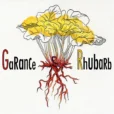
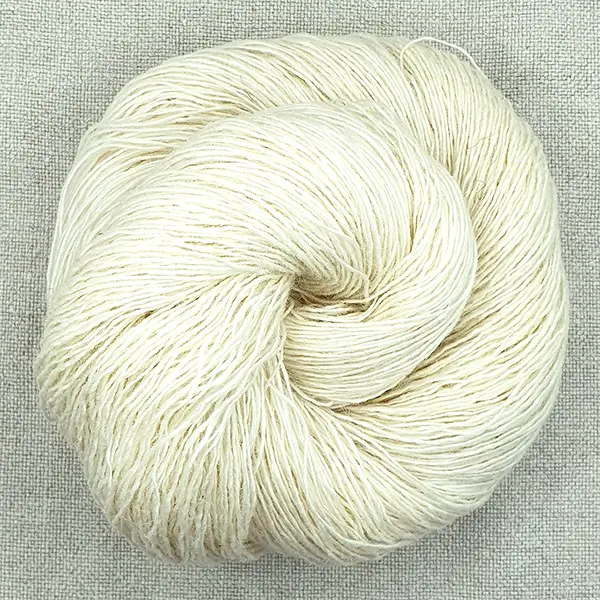
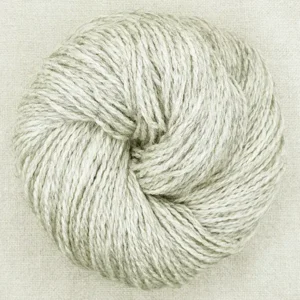
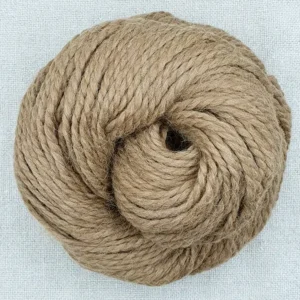
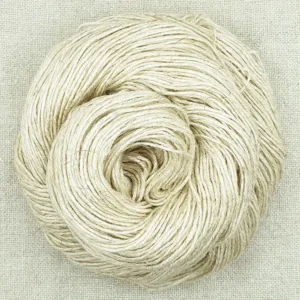
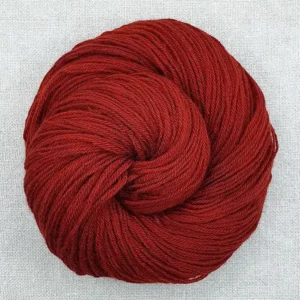
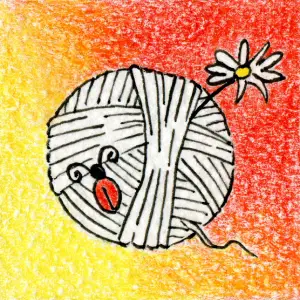
Reviews
There are no reviews yet.